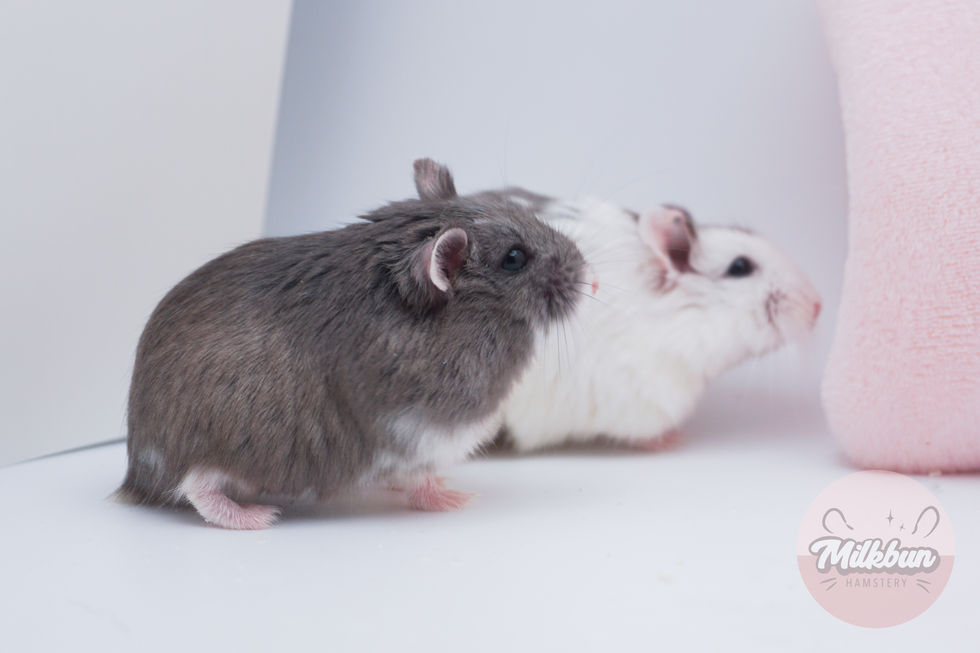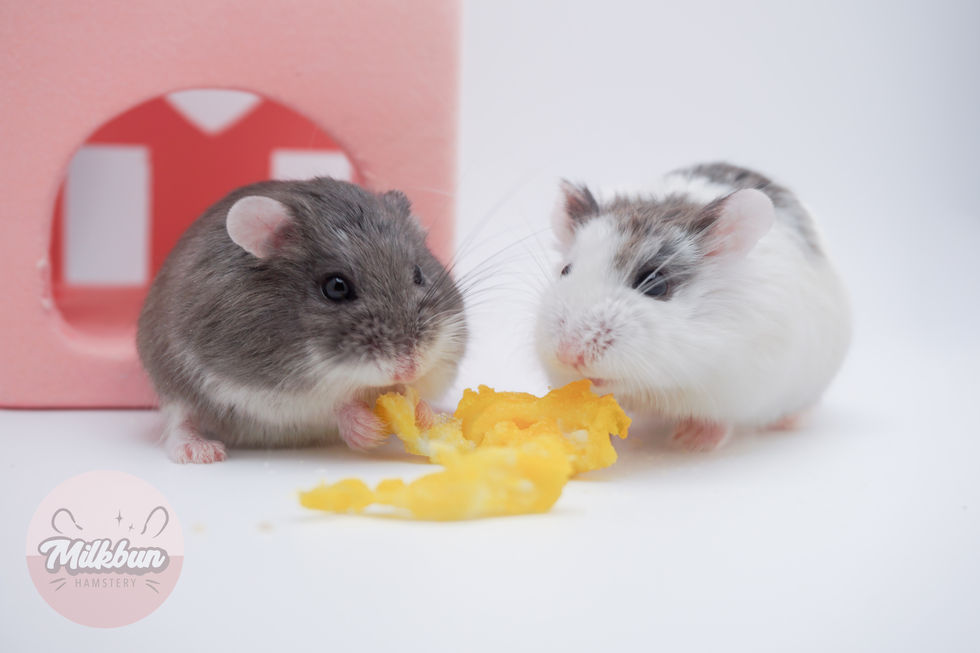
About the Robo Hamster
Meet the charming little Roborovski hamster, also known as the desert hamster, Robo dwarf hamster, or simply dwarf hamster. The "Robo" is the smallest among the three hamster species in the Phodopus genus and calls the deserts of Central Asia home.
At birth, they're just about 2 centimeters (0.8 inches), growing to a petite 5 centimeters (2.0 inches) and 20–25 grams (0.71–0.88 oz) in adulthood.
In the wild, the Roborovski is easily recognizable by their little white 'eyebrows' and the absence of a dorsal stripe, a feature found in other Phodopus members. These delightful creatures typically live for 2–4 years.
Quick, observant, but gentle in nature, Robos are fascinating to watch zoom around and interact with their surroundings. Robos are not known to typically bite.
Frequently Asked Questions
Firstly, I will preface with the following. I have had experience owning Roborovskis for over 10 years, I have had many. Both my personal stances and care recommendations are based on scientific evidence, the experience of other breeders, and my own close observation.
Can dwarf hamsters be housed together?
The short answer is, they can, but it depends on several factors and the temperaments of the individuals. Firstly - Syrian hamsters are STRICTLY solitary. With the exception of very unusual circumstances, they absolutely will kill each other. Syrian hamsters live alone in their natural habitats - after they reach sexual maturity, females will breed with a male, and then the two will go their separate ways, with the female raising the litter alone.
The three dwarf species on the other hand (Roborovski, Winter White, Russian Campbell's Dwarf) all exhibit different social structures and natural degrees of sociability; with the common factor being that they are actually not found solitarily outside of captivity, with the additional point of having completely different breeding behavior and family groups when compared to the Syrian - therefore it would be incorrect to lump the different dwarf species' behaviors into a singular rule, much less to the behavior of Syrians and dwarfs.
Wild Roborovskis exclusively live in colonies, though famously, disagreements and squabbling are a risk in captivity. Generally, there is knowledge that Campbell dwarfs and then Roborovskis are the most successful with lifetime cohabitation. I have had quite a few Roborovskis, and I am of the belief that given that a same sex pair get along well, cohabitation of littermate dwarfs can be enriching and is natural to them as a species that do not live solitarily in the wild. I say this, not as an individual that has 'gotten lucky' and only had peaceful pairs. This is not the case, growing up, I had a pair of young Roborovski sisters that ended up falling out and injuring one another, immediately warranting separation. However, I have also seen the benefits in my Robos of successful cohabitation in my hamsters. Being that they would never be without the company of others of their kind in their natural environment, my Robos enjoy grooming each other for long periods of time, sharing meals, and always make of a point of sharing a den.
Of course, keeping them alone as a pet eliminates the risk of injury entirely though, and I would not encourage cohabitation for anyone who would be unwilling to separate if there was a problem. And I definitely would not personally encourage going an getting your existing hamster a 'friend' out of nowhere.
Cohabitation of dwarf hamsters has now become highly demonized by the wider community compared to when I first got into hamsters. It is fair, because fallouts can happen. But what I tend to see from the communities now is not looking at animal husbandry as the extremely nuanced and case-by-case situation that it is. Just because some dwarfs cohab safely doesn’t mean that all will, and just because some dwarf don’t cohab safely doesn’t mean all won’t. Gerbils, for example, are known to get into fights and declan very easily in captivity, yet in the gerbil community and gerbil breeders highly discourage keeping them solitarily, because they live socially in the wild. I encourage everyone to have their own opinions based on their observations and reasoning.
Here is a resource from the California Hamster Association that I recommend:
























